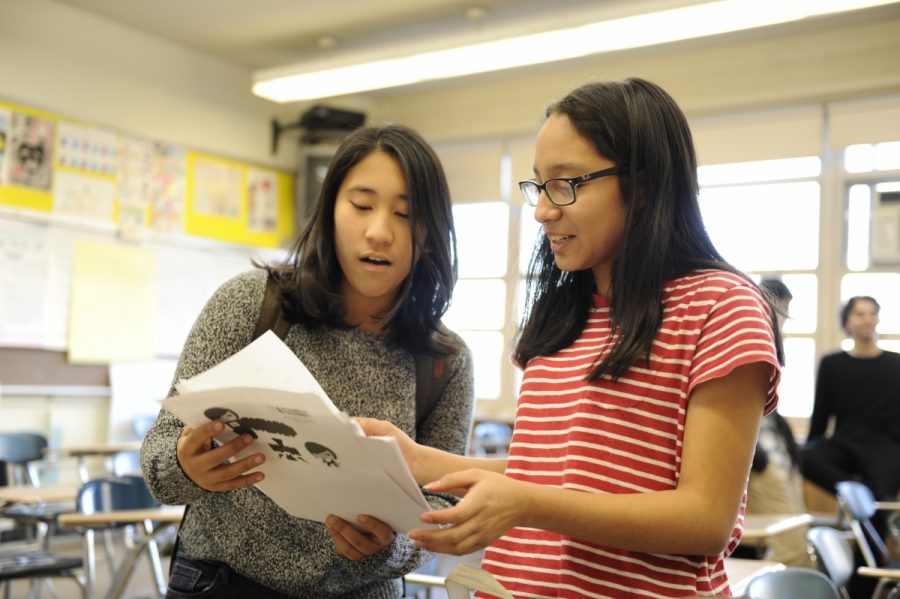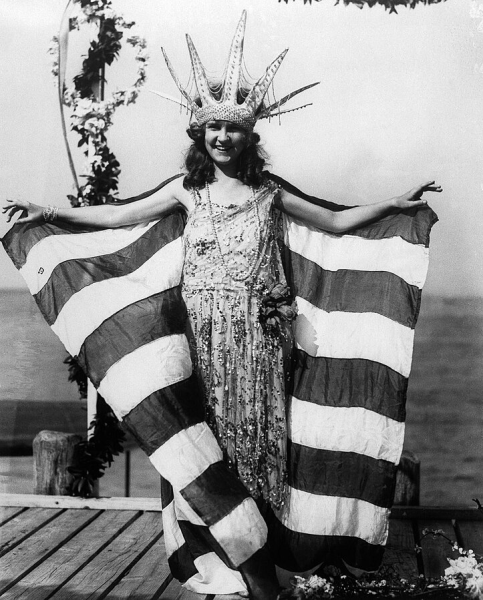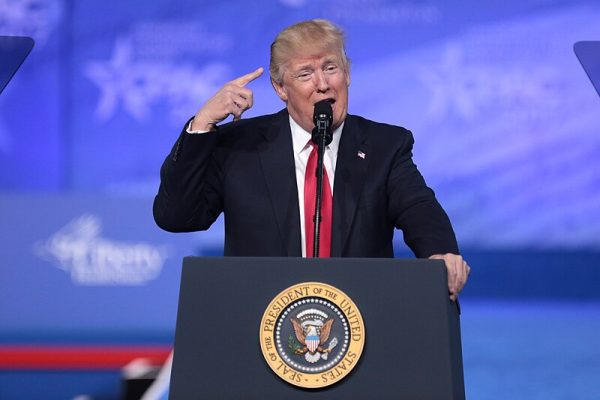Korean Pop Integration into American Music Culture
East Asian Entertainment Club President Jessica Jimenez ’20 fervently discusses new K-pop groups in club meeting with Jiwon Yi ’20.
Filled with bright flashing lights, synchronized moves, matching outfits, and picture perfect smiles, the South Korean pop music industry, also known as K-Pop, has become a recognizable worldwide phenomenon. From male idol groups paired with alluring smiles and smouldering gazes to female units filled with flirtatious winks and cutesy dances, K-Pop is an iconic business that has been the inspiration for many dancers and singers around the world. It has especially influenced American music culture by becoming one of the most popular foreign genres of pop music in the United States with new introductions of groups like BTS gaining fans by the day. With Korean pop’s presence, emphasis on performance and a larger appeal to more demographics have been introduced.
South Korean pop first truly flourished in the United States with the introduction of Korean artist Psy’s release of the song ‘Gangnam Style’ in 2012. The American teenage demographic was intrigued by its unique dance and catchy tune. Upon its release, teenagers were dancing and singing it online and in parody music videos.
With K-Pop’s clear western style of music and dance, the effect that Korean pop and American pop have had on one another is significant.
The genre incorporates elements of American pop, hip-hop, and R&B along with synchronized dances. The growth of K-Pop popularity in the United States is commonly known as the “Hallyu wave,” which translates to the Korean wave, referencing the increasing popularity and international spread of South Korean culture since the 1990s. This cultural influence includes the introduction of Korean food, language, and entertainment, in the United States ever since South Korea entered into diplomatic relations with China in 1992. Additionally, K-pop’s use of synchronized dances, single gender groups, and matching outfits, are elements seen in America in the 1990s with boy bands such as the Backstreet Boys.
The K-Pop industry appeals to a variety of audiences, with groups characterized by a variety of qualities, ranging from cutesy to cool to sultry. K-Pop is also memorable due to its inclusion of “point dance,” or simple dances that become trademarked with their songs. The inclusion of repetitive movements makes it easier for fans to follow along and enjoy performances even more. Notable point dances include Seventeen’s “popping” in “Mansae,” Psy’s horse style dance in “Gangnam Style,” Girls Generation’s crab leg dance in “Gee,” and Twice’s “TT,” in their song of the same name.
K-Pop has made an especially noticeable impact for Americans last year when BTS, referred to as Bangtan Boys in English, won Top Social Artist at the American Music Awards. This was the first time a South Korean group has ever won and performed at a major American Awards show. Their win showed the extent of their influence in the US and internationally. They are also known for being the only Korean group to land on the Top 10 of the Billboard 200 and for being the highest-charting K-pop group on the Hot 100 in 2017. In addition, they performed and visited major shows such as “The Ellen DeGeneres Show,” “The Late Late Show with James Corden,” and “Jimmy Kimmel Live!” exposing millions of Americans to K-Pop. Avid fans showed their love of the group by camping out for these shows and filling the majority of the seats.
Many note how K-Pop may get a bad reputation for its “sasaeng” fans, fans obsessed with the stalking and invading the privacy of groups that they like. However, many agree that the industry has had a positive influence with the publicity as idols encouraging and raising awareness for important global issues. “If American celebrities see foreign celebrities like K-Pop groups getting involved in global issues, they will be encouraged to do so as well, so I believe that K-Pop has had been a positive influence,” said Tiffany Chen ’19.
“On idols’ birthdays, there are fan projects where a large group of fans in different countries donate money or help improve the world to celebrate their birthday,” said Jessica Jimenez ’20, president of the East Asian Entertainment Club. “For EXO, fans have donated large amounts of money to UNICEF.” Similarly, many American artists use their publicity to promote causes, such as Taylor Swift’s donation to Children’s Hospital of Philadelphia and One Direction’s support for “Stand Up for Cancer.”
“If American celebrities see foreign celebrities like K-Pop groups getting involved in global issues, they will be encouraged to do so as well, so I believe that K-Pop has had been a positive influence.”
Moreover, in K-pop, rather than solo artists, groups are formed and debuted under one title. Members of a group are advertised to each have a different appeal point, whether that is musical abilities or vocal talent. “In the group Seventeen, they have the appeal of three different groups of the hip-hop unit, vocal unit, and performance unit to highlight each of their strengths. There’s a part of the group for everyone, whether you’re a singer or dancer!” said Stephanie Weng ’19.
In addition, K-Pop has made dance in performances more important. The industry is renowned for its intriguing, complex, and eye catching visual music videos with elaborate dances. This is a notable difference from the style of many American artists, where there is less emphasis on dance performance. In fact, those who dance the best in groups are often referred to as the main dancer. “I think the complexity of the K-Pop music videos has encouraged many American artists to add more to their performance dance-wise, so it’s more engaging to watch them,” said Iris Zheng ’19.
The K-Pop industry has also influenced beauty and fashion standards in the United States. Looks play an important role in the industry, with each idol looking picture perfect at all times. Though the result may be a larger demographic of fans, Puspita Dasroy ’20 said, “The downfalls of this beauty standard are the unhealthy habits that idols follow to look a certain way.” The “perfect” Korean idol stereotypically has pale skin, a similar height with other members, thin bodies, colorful hair, and small faces. The introduction of K-Pop to the American music industry has helped reinforce the expectations of thinness. However, America has differed by having broader expectations of beauty including a larger variety of features such as curvy body types, different skin colors, and greater racial diversity. There has also been a noticeable difference in fashion itself. Asian culture has influenced the implementation of pastel colors and simple designs in popular brands like Forever 21.
Overall, the Korean pop industry has had a very important influence on American culture today, not only affecting the variety of languages and food but also the music. With the unique Asian fashion that it brings and its influence on Western music, K-Pop can look forward to the integration and appreciation of more of its culture in the future.
Mian Hua Zheng is the Editorial Editor for ‘The Science Survey,’ and a Sidebar and Captions Editor and Academics Section Staff Reporter for ‘The...
Alexa Asch is in her third year of journalism and is a Managing Editor/ Copy Chief for ‘The Science Survey,’ and a Groups Reporter for ‘The Observatory.’...











